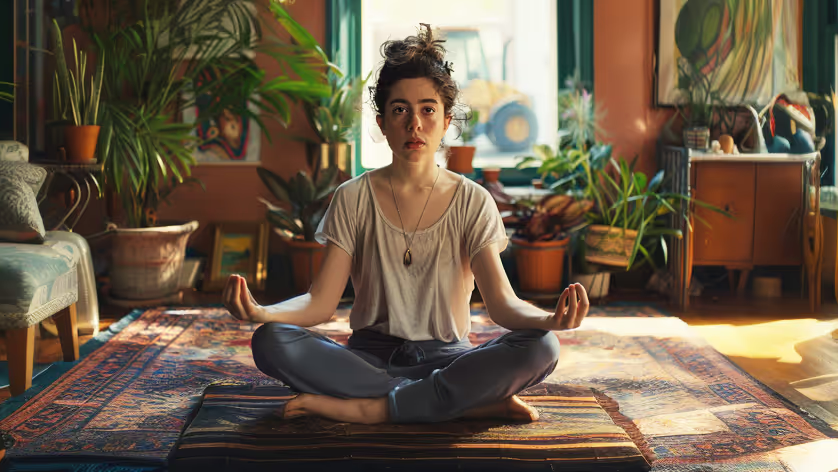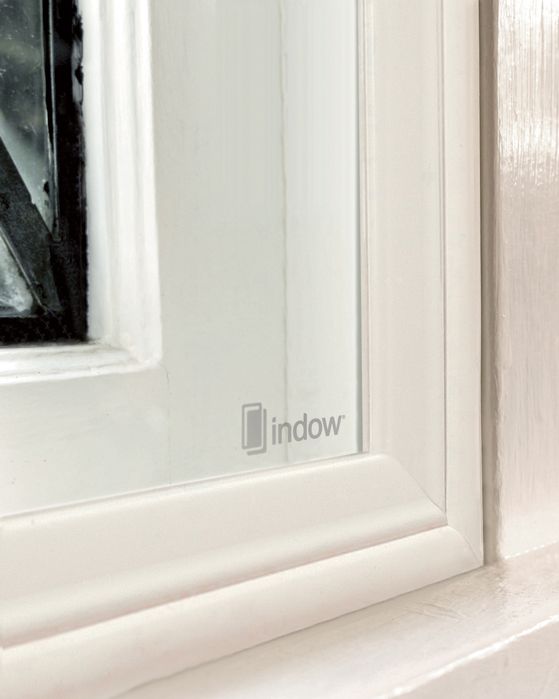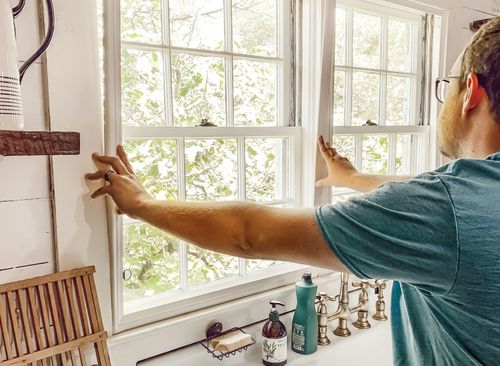SEE IT IN ACTION
What does a 70% reduction in noise sound like? Listen to how much the music is reduced even from inside the window!


Windows (even double paned) are notoriously bad insulators - especially against noise. Whether its dogs barking, cars driving by, construction, or any of the other noisy nuisances we encounter in our neighborhoods, windows can make it seem like the sound is coming from inside the house.

Soundproofing your home can be a challenge. Window replacement is an option for some, but can be a very costly and intrusive process and often only reduce noise by 25%. The total costs of window replacements (including labor) aren't a great option for increasing your home's resale value.
Adding Indow inserts to an existing window can make your windows perform as well (or better!) than a replacement window, but at a fraction of the cost and without the hassle and disruption of installing new windows.
AVERAGE COST
STC RATING
Other 'soundproof' options - like heavy blinds or 'sound absorbing' curtains - will only dampen outside noise, but also block out the things your windows do best - bathe your home in natural light. This is where window inserts really shine.

With our patented Snug Fit compression tubing and premium acrylic glazing, our Acoustic Grade Window Inserts can block up to 70% of the noise coming through your windows. That's about as close as you can get to soundproofing your windows without building a wall over them.
But the best part? They blend in with your existing window frames and let light flow in freely. In fact, if it wasn't for how much quieter they make your home - you'd forget they were there!
What does a 70% reduction in noise sound like? Listen to how much the music is reduced even from inside the window!

Constant traffic noise made it hard for this family to sleep and almost forced them to move before they found Indow inserts.
After moving in, we realized just how busy the street was because it was so noisy we could not sleep at all. Neither could our infant. (The inserts) came on time and were installed so easily, I couldn't believe it! The difference in sound was unbelievable.
— Maggie F

In addition to a substantial reduction in noise, Indow Acoustic Inserts also provide significant thermal insulating properties, keeping your home warmer in winter, cooler in summer, and realizing an average 20% in energy savings. It's a win-win-win for your pocket book, the planet, and your day-to-day comfort.
Our air-tight seal not only keeps noise out and your ideal temperature in, but it also reduces condensation and blocks dust, pollen, and other airborne particles. But that doesn't mean you'll have to live in a hermetically sealed home! With a gentle tug on the provided D-ring, you can break the seal and remove the inserts whenever you want to open your windows and let in some fresh air.

Acoustic Inserts
Starting at $36/sf
Acoustic grade inserts reduce noise up to 70% - making your home nearly soundproof, while saving an average of 20% on your heating & cooling bills, preventing condensation, and keeping pollen & pollutants outdoors.
AVERAGE
20%
UP TO
70%
OVER
99%
Your inserts are custom made to your exact window measurements with our proprietary compression tubing, ensuring a nearly airtight seal and backed by our Snug Fit Guarantee.
Your inserts feature premium insulating acrylic that is built to withstand daily use and engineered to perform for the lifetime of your home. Guaranteed to be free from defect by our Lifetime Warranty.
Installation is simple - no tools or modifications to your existing window frames are necessary. Simply slide them into place in seconds and experience immediate results.
Each insert is proudly handcrafted in our Portland, OR facility using materials sourced right here in the USA, which allows us to maintain rigorous quality control and meet our exacting standards.

Indow has insulated more than 23,000 buildings - helping reduce carbon emissions by nearly 200,000 tons - and creating comfort across the US & Canada!
Request a Free Estimate. We'll provide you with a preliminary estimate based on your basic window dimensions. It's quick and easy!
Measure your windows with our easy-to-use laser measurement kit. We'll guide you through the simple process, ensuring a perfect fit.
Customize your inserts to match your needs and your aesthetic, with tubing colors that seamlessly blend into your space.
Transform your space with custom-crafted inserts shipped directly to your home, ready to fit perfectly in your windows.
You're one step closer to creating more comfort & quiet in your home.
To receive a customized estimate for your space or learn more about how Indow inserts can improve the comfort, quiet, & efficiency of your home, fill out the fields below.

We value safety and privacy. We will never share, sell, or rent your data to third parties not directly related to your purchase or consideration of our products. Read our full policy here.
These windows are great! They have improved the quality of our home with reduced thermal loss and reduced noise level! The temperature today is 93° outside, our split system is set at 73° and the inside house temperature is 74°! Before the install of these windows the inside temperature with these conditions would have been 76°! Last night I noticed an ambulance going by. Normally the first thing I recognize is the noise, but last night I didn't realize it was an ambulance until I saw the flashing light! Hannah did a wonderful job coordinating the measurements and the sale! I would recommend these windows to anyone!